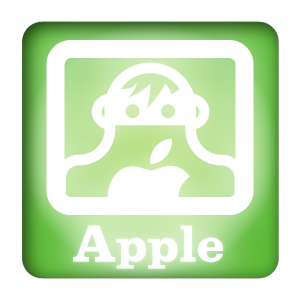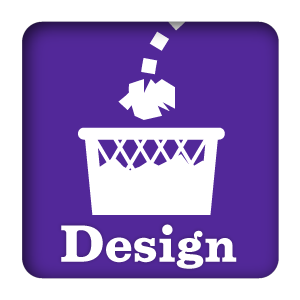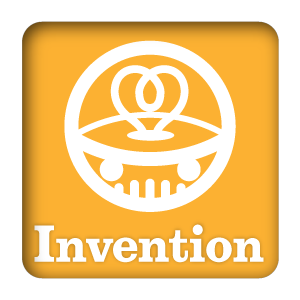This is the one non-Christmas event left on Apple’s schedule, and it’s Apple’s opportunity to shine a light on products that aren’t iPhone-related. Unfortunately, it doesn’t look like we’re going to see much this year. Apple TV is apparently not ready to go, there’s no sign of the 12-inch iPad, the company remains fixated on non-product issues, and all the while the Watch launch is still eclipsing the sun. The Apple world is really stale at the moment, with a lack of products. So rather than trying to predict if the Apple Music service will allow three skips or four, let’s just take a look at the overall state of Apple.
Devices
iOS devices drive the train at Apple, and for the average person, is really the only thing they care about. Hardware wise, there are no imminent developments on this front.
iPhone: Despite the pleas of mainstream journalists, the iPhone will not be updated until the fall, as has been the case for several years. The only development here is the loss of AT&T’s subsidized plan, which seems to herald the end of the subsidized era of phone purchases. The effects of this change will be felt over the next two years as contracts expire and other wireless carriers discontinue their plans, and I think will materially affect the sales of iPhones to some degree. Customers might be more apt to delay a purchase if they have to pay more up front. That loss of sales will likely be very small, but when Apple’s business depends so heavily on the insane sales numbers of the iPhone, the monetary loss is something for Apple to think about.
We’ll have more to look at in the coming months, but the iPhone is due for a couple of improvements. The first one that comes to mind is inductive charging. The ease of just laying your phone down on a panel and waking up with it charged seems like just the sort of thing Apple would be into, and the technology around inductive charging has settled. Wouldn’t it be a better solution to have somewhere you lay your iPad, MacBook, Wireless Earphones, iPhone and Watch and find them recharged in the morning without latching/unlatching a connector?
iPad: The rumored 12-inch iPad, aka iPad Pro, aka iPad Plus, was a hot and heavy rumor a while back, and I believed as long ago as last year that this would be the event to release it. I believe it’s more of a prosumer item than consumer, and WWDC would be the best spot for a soft landing. If they don’t release or announce it, and it doesn’t look good right now, then it would drift into the Fall announcements and get trampled by consumer-focused products – and that might delay it to WWDC 2016.
For the existing iPad products, there has been a bit of hand-wringing about the slight decline in iPad sales. What they need is a new feature, something that will get some attention. When it comes to most consumers, the only significant difference between the iPad and white-box generic tablets is the logo on the back. The iPad has had six years to find a killer feature, and it’s high time to give it one. The rumored split-screen and multiple-user features for iOS 9 are a great start, but I also think the iApps need some true power upgrades.
iPod: You remember the iPod, right? Ask your parents. Even iPod Touch sales are dwindling in this category, and with the loss of the Classic, it remains to be seen if Apple will just lop off these products at some point, especially with the Watch now the dominant exercise device in the lineup. With wireless earphones the new thing, and the Watch grabbing the fitness niche, the Shuffle’s appeal is becoming very limited. If it weren’t so damn cheap and virtually all profit, I think Apple would have gotten rid of it already.
The iPod nano hasn’t had any wind in its’ sails for some time. I think you could put the Watch OS on a device in this class and give it new life. An “iPod Nano Watch” could also replace the iPod Touch as a kid’s first device, bring the Watch OS to the non-watch users and keep the youth market interested in your non-Beats products.
Apple Watch: I’m already drained of what little enthusiasm I had for the Watch, and I’m hoping that the conference won’t spend a lot of time on this subject… But I know they will. There will be a promised Dev Kit for using the Watch CPU, and they will also mention that the sales “exceeded all expectations” as they are obligated to. Apple and the tech press is suffering from a case of Watch fever, and I don’t think they realize that the rest of the world has regarded this product and it’s introduction as a bit of a mess. I will be interested to see if Apple just cheerleads the product or admits to any faults in how it was all handled. My hope is that they find another way to bring the Watch experience to people like me who don’t want anything to do with a watch.
Apple TV: The great hope of this WWDC event was the long, looooong rumored release of Apple’s next-gen TV product, and if the rumors are correct, that product is not going to be a part of it. I’ve written about what I’d like to see from a TV product, but more and more I’m seeing Apple TV as an internet service and not a physical product. That’s a shame if that’s the case. My interest in the Apple TV was in a new interface for TV and a new take on what TV means. As a web service, it feels more like a new name for big cable. But we’ll have to see what it ultimately is. And then wait some more.
Desktop Macs
iMac: The iMac was spec-bumped just a few weeks ago, so there’s nothing expected on this front. The iMac continues to be the heart of Apple, even if they don’t get the love and attention of the iOS devices.
Mac Pro: With the expected lack of hardware announcements at WWDC, and the crowd being a prime market for the Pro, Iit would not surprise me if Apple did some sort of an upgrade to this product for the event. A new graphics card or drive option wouldn’t be too hard to swing.
Mac Mini: The Herbie the Love Bug of the Apple line, the Mac Mini doesn’t get a lot of attention, but it’s also a dev favorite for testing. I think these are on a two-year upgrade cycle at a minimum, and this is not the year.
Portable Macs
Overall, the portable line is priced too high. The $899/$849 MacBook Air is the cheapest portable Mac Apple has ever made, but the median price for a quality laptop in the rest of the world is $699, and a “usable” laptop can now go as low as $199. Apple will not compete on the low end, but it’s now the middle of the consumer market that’s changed, not just the low end.
MacBook: The long-lost MacBook Singular recently returned to the flock, this time in aluminum, looking like it had lost weight and it had picked up a haptic engine along the way. The jury is still out on it, but it feels like a prototype to most users. It’s a love-it-or-hate-it sort of laptop, and will need changes, but it’s too soon.
MacBook Air: If, as many speculate, the MacBook is the intended successor to the MacBook Air, then the Air itself will likely get one or two solid upgrades before being sent to pasture. This is not a good time to do that, with the MacBook still trying to get off the ground. But if Apple wants to spec-bump a laptop fro the laptop-loving developers, this would be the one.
MacBook Pro: An old chestnut of WWDC events in the past is to do a spec upgrade of the MacBook Pro, but they just pushed out the Force Touch models a couple of months ago, so this isn’t a good time for any upgrades.
Peripherals
Let’s not forget that Apple makes a few things that aren’t running an OS.
Keyboards & Input: Yes, I’m including keyboards in this rundown, because I think something is bubbling here. There’s been some speculation on a backlit wireless keyboard, although I don’t think that’s a terribly necessary or urgent upgrade. I do think that Apple might make a cosmetic change to their keyboards that is more in line with their new San Francisco-fonted laptop keyboards. I also think that the Magic Trackpad could get an upgrade to a Force Touch pad. I don’t know that either of these two things need to be done before the iMac gets another upgrade, but if OS X is going to include Force Touch interface enhancements, then you’ll need a desktop trackpad to match.
Monitors: And now monitors? Yes, indeedy. The current Thunderbolt external monitor is way too expensive for a previous-generation 3K display. There should be a 27” retina 5K model, and it should have happened months ago. As Apple did with the 30” model a few years back, they may just be waiting for sell-though of their existing inventory before a new monitor is unveiled.
Beats Audio: The Beats Audio products have yet to get any significant changes since the acquisition. I’d like to see a separate “Music” event go back into the Apple event rotation, where they could talk about Beats and Apple music products, but if Apple is keen to introduce their new music service at WWDC, then they might add a few Beats items to the list. It’s the farthest out on a limb my predictions go this year, but I can see a new/improved wireless headphone model for the Watch, although it’s a little awkward to already have four models of Beats in-ear headphones and two Apple in-ear headphones, something that’s going to have to be reconciled at some point. We’ll know Apple is taking control when they discontinue the Beats Pill Dude.
Software
Mac OS X: Personally, I’d settle for a version of OS X that doesn’t spontaneously quit all users when I switch accounts. I run into that every 2-3 days, and occasionally lose something in the process. Simply put, this version of OS X has been inexplicably unstable since release. If there had been some groundbreaking new tech that might have caused it, it would be understandable, but there wasn’t. Yosemite was basically notifications and AirDrop, and they messed up Bonjour (2) in (3) the (4) process (5). What was most disheartening was not that bugs exist in Apple software, that’s just a part of deal, and it’s been the case for every piece of software ever written. What was disappointing was letting them linger for a year and counting without issuing fixes. That’s simply irresponsible to ignore these kind of problems or a sign of mismanaged resources to fix them.
What’s also been noticeable is that Apple has let some key parts of their OS X experience stagnate. The core Apple apps: Pages, Keynote, Numbers, Safari, iMovie and Garageband have all gone without significant updates for over two years. iTunes had a makeover, but desperately needs a total re-think. The only significant app to get attention was Photos and the process to get from iPhoto to Photos took two years to get done. Mac OS X needs a lot of love and attention right now.
In Mac System 7.1, way back before the turn of the century, they introduced something called the “Control Strip” a sliding tab that was parked at the side of the screen that let users quickly access individual control panel features from the desktop. It was done primarily because the control panel metaphor was broken and needed fixing, but instead, Apple opted to keep it in place and add a new item to the desktop in the control strip. In those days you sometimes needed to make quick changes to the control panel settings, like monitor color depth or sound levels and then change them back again, so you navigated to the control panel, navigated the various menus on the control panel, made the change, closed it to apply it and then went right back to it for your next change. It was hard to do.
Now, Apple is bringing the apparently bringing Control Strip metaphor back by introducing the iOS swipeable control panel to the Mac. What was needed here, and what is needed on iOS, is not a “quicker alternative” to get to the control panel settings, but a whole new control panel metaphor. If one needs to constantly change control panel settings, then putting that icon on the Mac desktop or the iOS dock would do the job. Hiding a control panel behind a swipe action is extremely poor interface design. It’s also worth noting that a control strip already exists on the top right of the Mac for quick changes.
On iOS devices, the control panel metaphor doesn’t work quite right and it never has. With all the attention on individual apps for privacy, location, notifications and other specific app-by-app settings, the effectiveness of scrolling through a list of all the apps on your device for every setting category is less than optimal.
iOS: The big change for the previous iOS 8 update was the new “look” of the interface, which was not universally beloved. The interface eschews icons for text, not unlike the Watch interface, and creates more problems than it solves. Icons are nice and square, and you can fit several in a small space. That’s especially helpful when your screen real estate is valuable. But taking a screen that can be very narrow and making the interface “buttons” into words is a little ridiculous. It not only makes internationalization a challenge, as you have to change all the buttons to fit the local language, but most words are far wider than they are tall, and you can only put so many side-by-side. The navigation controls in iOS can be ridiculous, especially if you find that some buttons end in “…”. And putting navigation buttons at the top of larger screens is downright idiotic. You cannot navigate pages in iOS 8 on screen larger than five inches without using two hands.
The entire user interface of iOS should be under question. The metaphors are breaking down, the design is poor and users are increasingly wary. The gesture and swipe interface has gotten so complicated that brushing your screen (or Mac trackpad) can cause a whole lot of random grief, and I know a lot of people who are kind of scared to touch their device’s screen unless they know exactly what they are doing. Additionally, the interface is so dense that touching anywhere on an iOS screen will always result in some sort of action, and now that the front of Apple devices are almost totally screens, that makes holding a device kind of like holding a sleeping wolverine. You never know what’s going to happen if you make the wrong move in the wrong way at the wrong time. No one wants a wolverine in their pocket.
Developer: Not being someone who makes their living as a programmer, it’s hard to get totally under the skin of what programmers want or don’t want. What isn’t hard to see, though, is that programmers do tend to be a sequestered community, and they seem to like it that way. So last year when the Swift programming language was introduced, the programmers in attendance hailed it as the next logical step in programming languages, taking the simplicity of a syntax like javascript and melding it with the control and power of Objective-C. In the end, though, Swift doesn’t really make an impact beyond the programming community, and that’s where it falls short of being a truly impactful advance in programming.
The real advance that’s needed in programming is bringing programming out of the shadows and into the daylight. You average Grandma might not want to make a photo filtering app, but there are a lot of people with good ideas and the desire to turn them into apps who can’t program worth bubkis. I don’t see a lot of new languages being created out there in the marketplace, but I do see a lot of attempts to make “no programming” app construction and design. That should be Apple’s market. Yes, make sure your traditional educated and top-notch devs are feeling loved and appreciated, but it’s also necessary to bring some new creative ideas into app development through simpler app making methods. That’s the programming solution I’d expect from Apple, not a next-gen javascript.
iTunes: Yikes. This thing. iTunes is the most egregious piece of bloatware made by Apple and it gets larger and more onerous as time goes on. The problem is that it’s so essential. iOS attempts to get it right by breaking up the monopoly and puts the stores in separate apps and the music and video players in separate apps. iTunes needs to break out some of the store functions into Safari, as they do appear to have a “shadow” iTunes store operating on the web when you click on internet links. I’d like to see someone take a carving knife to iTunes and trim it down to the essentials.
However, the last revision did mess things up a little. As someone who operates a large library, losing fields and being looked out from changing some was not the solution I was looking fro, but that’s what we got. I also did not appreciate losing the store as it’s own button. Sticking it into every category of media is clumsy.
iTunes Match also needs some help. It still has some very quirky and occasionally destructive habits, like losing any data you input into the fields for tracks you import manually. I’ve had that happen to me repeatedly over the past three years and it’s the most aggravated I felt towards my computer in decades.
iApps Pages, Keynote and Numbers have been relegated to red-headed-stepchild status, and as a long-time user, I’m more distressed at this development than anything else in Apple’s software portfolio. All of these apps underwent a radical change back in 2012, removing serious amounts of functionality and rearranging everything into a new interface that was designed (presumably) to be feature-compatible with the internet versions of the iApps. That move felt like a betrayal of sorts. I do know that internally Apple uses Office almost exclusively, but it would be nice if they ate their own dog food once and a while.
These apps are begging for an update, and a good one.
Services
The fifth leg of the four-legged stool.
iCloud: As I’ve discussed before, it would be nice if Apple could get on top of this effort and just deliver what it promises. We all know how crucial the internet cloud element of computing is and will be – and that Apple’s building servers all over the place. It’s hard for me to know if Apple’s built a cloud infrastructure that’s about to crash down like like a tidal wave and flood us with cloud goodness or if they are still working out the kinks and figuring out what to do with it all.
Apple Pay: Of everything that I’m carping about, Apple Pay is the subject where I can towel off my fevered forehead. They are kicking ass on this so far. But the competition is going to be on their tails, so It’d be nice to see an occasional upgrade here and there, such as coupons and loyalty systems added.
Music: The Apple Music service is a lock for this WWDC, but it’s also one of those things I don’t have any personal use for. I’m a buy-and-own sort of music listener, and I have thousands of tracks simply because I hate radio. My worry is that Apple Music will take such a prominent role that the buying services of the iTunes store will be depreciated and I’ll be downloading a copy of Lime Wire. I also worry that the ability to play my own tracks in iTunes will similarly be downgraded. That’s a worst-case-scenario, but I can’t help but worry about it. Apple does things like that from time to time, where they get so high one something new that they last aside the old way of doing things.
But of more relevance, Apple Music needs to beat the rest of the streaming music industry without screwing over the artists. In all the excitement over Apple even having a streaming service, the interest of the artists seems to have been forgotten. I love music, but I don’t want to participate in a service that kills the artists financially.
iTunes Store: As an extension of what I mentioned above, the iTunes store is a little broken right now. Not just by sticking the store inside the media categories of your iTunes library, but even worse are the discovery functions iTunes offers. I’ve also mentioned in previous pieces that iTunes really needs to triangulate genius and suggested-purchase results. Right now it’s a simple “you liked this, and another person who liked it liked this, too.” It should be a case of “of the three hundred people who also like this track, fifteen also liked another track you listen to often, and six of them like this track you don’t have.” Genius needs some help, as well. I used to get great results. Now I get generic matches. If I turn on Genius for any rock track recorded between 1978 and 1992, I get overwhelmed by Cyndi Lauper and Thomas Dolby tracks. I’d like tracks that match in tone, genre and tempo, not a playlist from the worst 80’s oldies radio station ever created.
Also, why, when I type something into the search field in the store, do I get every type of media shot back at me? I don’t type something into the iTunes search field like “Harrison Ford” and want to see all the books he’s in. I’m looking for movies first, right? Why can’t iTunes figure that out? When I’m trying to figure out the name of a music track I half-remember, I’ll get hit with seventeen completely unrelated podcasts, a Chinese poker app, a fart ringtone and the complete works of Sartre. That search needs to be improved considerably.
CarPlay: I don’t think Apple’s put less effort into a piece of software since they put iTunes on the Motorola Razr. CarPlay is slow and unreliable, and the support from carmakers is lacking. Plus, you often have to fight past the kludgy car interfaces to even use it. While driving! This is a case of needing to go back to the drawing board.
Or maybe they already did and just decided to design the whole damn car…
Siri: The rumor mill has it that Siri is going to become smarter regarding appointments and contacts, and prompting you when events are about to occur. That’s nice, but I’ve never been entranced by the idea of having a “digital assistant.” I’m far more interested in Siri as a voice interface to the device. Sometimes I think people make their lives feel more important by having a computer track it. “You have an appointment to go check the mail for the third time at 3:15, Dave.” “Reschedule that for four and move my staring aimlessly into the ether to 3:00, Siri.”
What I’d really like to see is the “Hey Siri” command turned on all the time. That’d be a little bit of a game changer, in my opinion.
Home Kit: So far, this is a tragic case of an interface standard cast out into the wild only to have it furiously ignored by the market. If Apple really wants to press this, they’re going to have to make some hardware to show how it’s supposed to work. Rumor has it that it was supposed to be a part of the new Apple TV hardware which isn’t going to be at WWDC. So… What’s to become of Home Kit? I’m curious to see how many sessions are devoted to the topic.
Markets
Educational: Without any data to support my assumptions, my opinion is that it feels like the education market is no longer looking to Apple for solutions, and that needs to be reversed. Apple can make a great argument on quality, but when their product is $200+ more expensive than an Android/Chromebook/Windows laptop or tablet, most bureaucrats are going to run with the low bidder. Apple doesn’t need to make wholesale changes to what they are doing, but they appear to be losing steam and interest in education.
Right now, Apple is kind of stuck in the middle with a Mac laptop that’s more expensive than almost all educational laptops, and an iPad that doesn’t function very well as an educational tool. It’s hard to write a paper on that keyboard or research information on the one-thing-at-a-time interface. Drawing, designing or simply manipulating information is slow, cumbersome or downright impractical.
To me, this is an opportunity waiting for a solution. Combine an iPad with multi-tasking, better iApps and a physical keyboard and you have something. Take a MacBook Air, take out some of the fancier stuff like the keyboard backlight and 128GB flash and maybe it’ll be more affordable and still great.
Business: It kind of feels like Apple it out-sourcing the business marketing to IBM with their partnership. Maybe that’s a good thing, but there’s so little information on how things are going that’s near impossible to tell if this has been the right move. I like to keep tabs on all elements of Apple (Some people build a life of adventure, challenge and achievements. I have Apple news alerts.) but the business market exists in some news netherworld I don’t have access to.
Creative: Apple kind of goes at the creative with a tough love attitude. It’ll ignore the creatives for years and then a new version of Logic Pro or Final Cut hits the market with no warning. And if you don’t like the version? Well, you’re holding it wrong. They’ll also do things like kill off Aperture and walk away from it without a tear.
Along with a “construction kit” programming app that I mentioned earlier, I’d also like to see a game building studio. Games are getting bigger and bigger, and just like Hollywood movies, they’re now multi-million dollar efforts. You also have “Major Studios” and “Indie Studios” in the game and movie industries. Likewise, there’s a market for “prosumer” game creation, and Apple would benefit monetarily selling a game studio app, selling the hardware to run it on and then taking the profit from selling the finished game in the App Store.
As for hardware, I have a lengthy article on the site about a “Creative iPad” and I think that would alone be the biggest thing Apple could do for the creative community. An iPad with a stylus and waco-like capabilities would do some pretty amazing things for artists.
Consumer: There is always an air of elitism with Apple products, and making Gold Watches did some real damage to the public perception of Apple. Whoever green-lighted the “Edition” as a major product should be kicked in the shins. You could still make that product, but marketing it as heavily as it was made Apple the fodder of a lot of jokes that stung. Gold cases aren’t exactly helping things, either. China may like them, but otherwise they look kind of ridiculous to most Americans.
The thing that would get Apple back in touch with the consumer market is a great TV product that everyone wants. Unfortunately, that product has been delayed for years and sounds like a bit of a let-down from what we know about it. The Apple TV, after the mixed results of the Apple Watch intro, is now an even more important product than it ever was, and there’s a lot riding on it. If it’s just a different “spin” on cable TV, it’s a loser. If it’s insanely great, I can stop worrying and learn to love the Watch.










